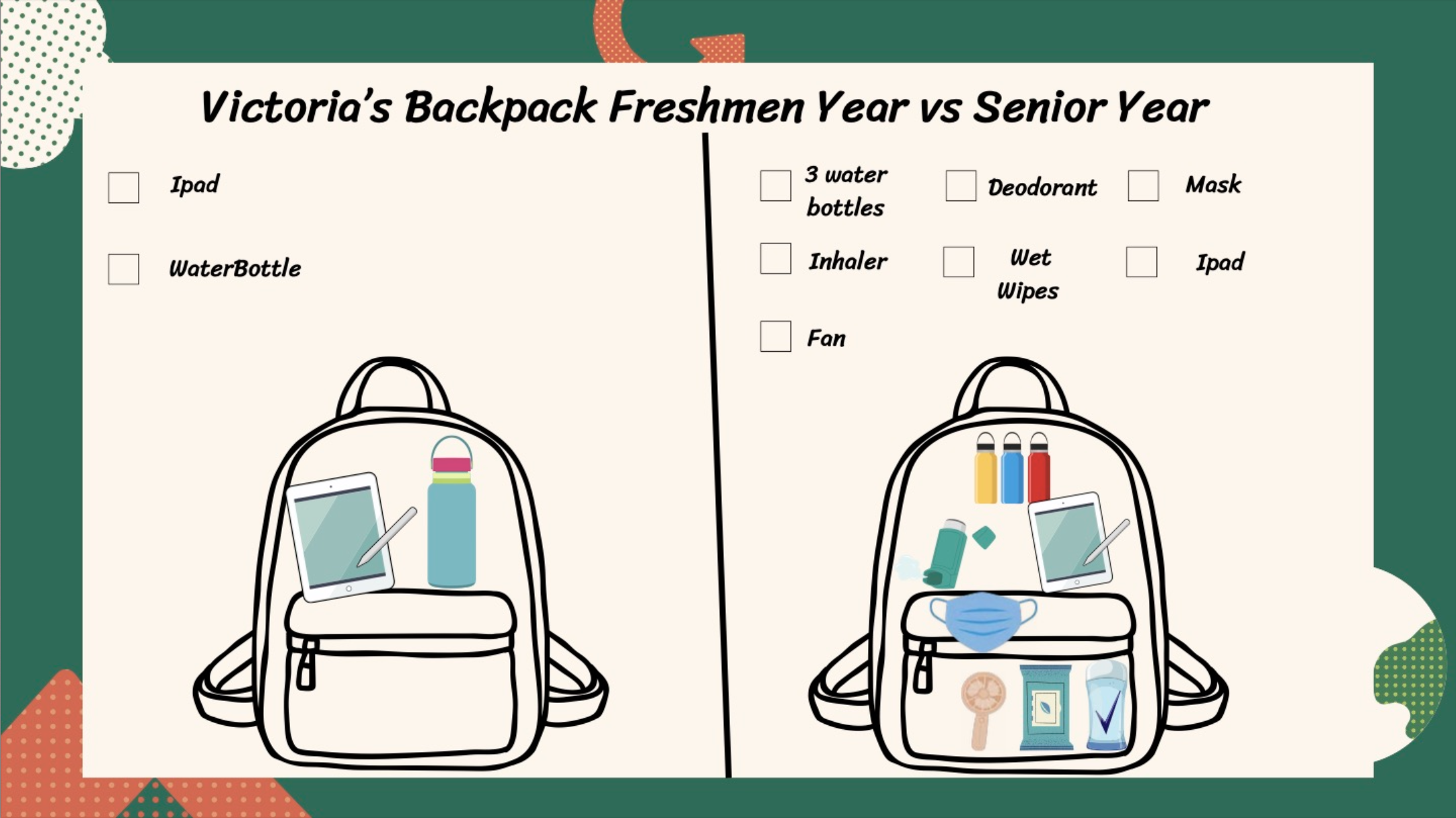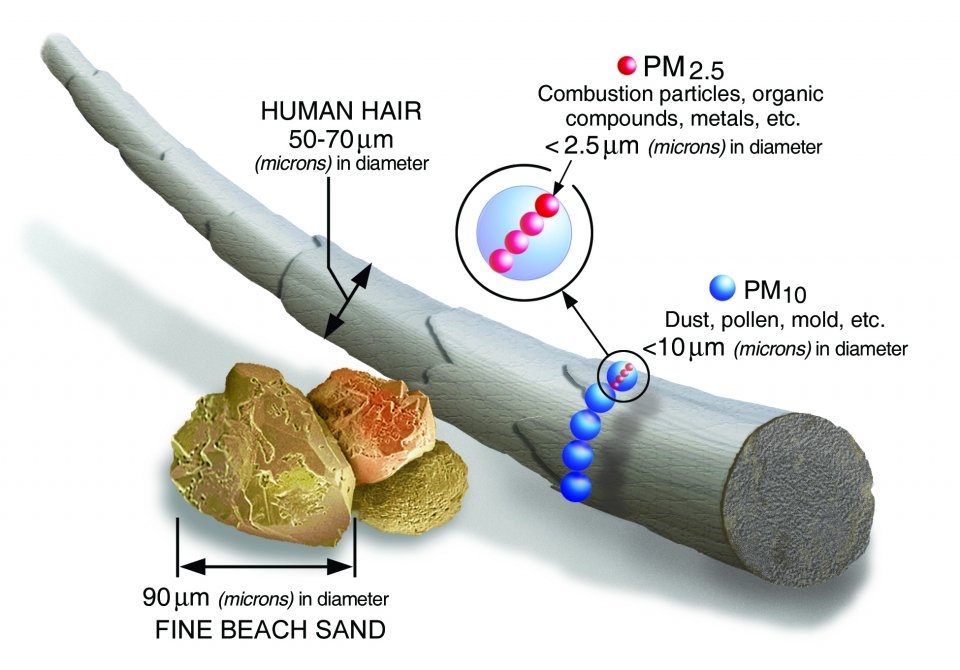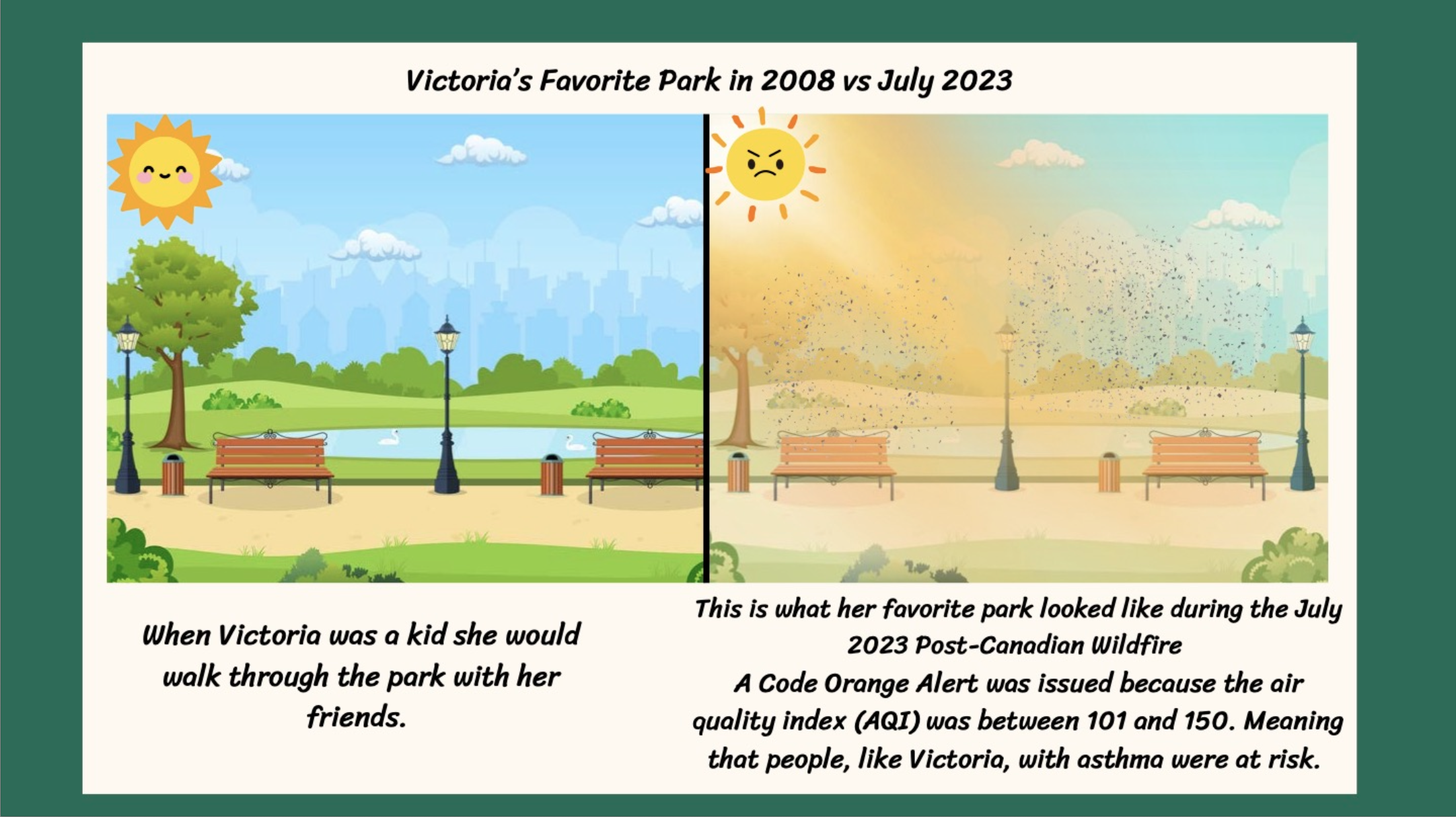It’s 7 a.m. on a Friday morning in Atlanta, but the heat feels like midday in July. Victoria, a double major in Human Health and Environmental Science at Emory University, slings her backpack over her shoulder for the short 10-minute walk to campus. Inside her bag are three water bottles, deodorant, wet wipes, a portable fan, a mask, and her inhaler items she never thought she’d need just to get through a school day.
When she was a freshman, her bag carried only an iPad and a water bottle. Back then, walking to campus felt easy. Now, each step feels heavier.
For Victoria, the walk to class is a daily reminder that the air itself is changing. Victoria’s story is not unique and that’s what makes it urgent.

A city in the heat trap
So, what exactly is in the air that makes a simple walk so difficult? Atlanta is no stranger to summer heat, but rising temperatures are changing what it feels like to live, breathe, and move through this city. Increased heat isn’t just about discomfort - it triggers chemical reactions in the atmosphere that produce pollutants such as tropospheric ozone and fine particulate matter, known as PM2.5. Together, they make up the invisible haze that now hangs over many parts of Atlanta.
Particulate Matter (PM) refers to tiny solid particles and liquid droplets in the air, such as dust, soot, and smoke. These particles vary in size, with fine particles (PM2.5) being 2.5 micrometers or smaller and especially harmful because they can reach deep into the lungs and even enter the bloodstream. PM comes from sources like construction sites, fires, and vehicle emissions, or forms in the atmosphere through chemical reactions. It not only harms human health but also reduces visibility, causing haze in many areas. For people with asthma, like Victoria, these microscopic particles can turn a short walk into a struggle for breath. For people with asthma, like Victoria, the threat is a daily reality that dictates her activities.
But PM2.5 isn't the only threat, there are other pollutants, such as tropospheric ozone, that are becoming increasingly problematic over the summer in Atlanta.

Tropospheric Ozone – Unlike the “good” ozone high in the stratosphere, tropospheric (ground-level) ozone is harmful. It’s a super pollutant, meaning it both warms the surface temperature of the Earth and damages human health. It forms when pollutants mainly nitrogen oxides (from car exhaust and industry) and volatile organic compounds (from fuels, solvents, and even some trees) react with sunlight and heat. The hotter the day, the faster these reactions happen, making summer in Atlanta especially risky.
Ozone doesn’t just irritate lungs; it can trigger coughing, chest pain, and breathing difficulty, especially among children, the elderly, and those with respiratory conditions.

The Park That Changed Color
Victoria remembers playing in her favourite park as a kid. Back then, it was a refuge; green, vibrant, and filled with laughter. But in July 2023, the view from that same park was obscured by a thick haze. Reason was that, the smoke from Canadian wildfires had travelled thousands of miles, settling over Atlanta and significantly degrading air quality.
The city of Atlanta issued a Code Orange alert, meaning the Air Quality Index (AQI) reached levels between 101 and 150. The air was officially deemed unhealthy for sensitive groups, including children, the elderly, and people with heart or lung disease like Victoria, who has asthma. Her favourite is no longer a safe place, going there is now a health risk.

Not Everyone Breathes the Same Air
As Victoria checks the AQI before heading out, she knows that others in Atlanta don’t have the same privilege or choice. The burden of pollution isn’t shared equally.
A growing body of research shows that communities of colour and low-income neighbourhoods, often historically located near highways and industrial zones, experience disproportionately high exposure to harmful pollutants like PM2.5 and ozone1
This inequity is not accidental but a systemic problem. A 2021 study found that Black and Hispanic Americans bear a disproportionately high PM2.5 pollution burden from nearly all major emission sources.2 Specifically, people of color are exposed to higher-than-average concentrations from sources responsible for 75% of total PM2.5 exposure, while White Americans experience lower-than-average exposure from sources causing 60% of it. This disparity persists across urban and rural areas and at every income level.2 This means pollution is not just an environmental issue- but also a justice issue.
Turning Policies Into Real Change
The weight Victoria carries isn’t just in her backpack anymore - it’s in the air around her, it’s from a system slow to change. Clean air isn’t a personal concern anymore, it’s a political one, and real change must come from policy.
Policies like the Clean Air Act have improved air quality over the decades, but the fight is far from over. The Atlanta metro area was ranked 67th worst in the nation for ozone pollution, according to the American Lung Association’s 2024 “State of the Air” report.
So, what would it take for Victoria…and all Atlantans to breathe freely again?
- Planting strategic urban greenery, focusing on tree species with low VOC emissions, to provide shade and cool neighborhoods without exacerbating air pollution.
- Enforcing stricter emissions standards for vehicles and industries.
- Building walkable, transit-friendly cities that reduce car pollution.
Your Turn to Walk Home
As Victoria walks home, she feels the same haze settle over the city. Her bag and heart feel heavy, every breath she takes tells a story of resilience, but also a call for change.
So, as you take your next deep breath, ask yourself:
- How safe is the air you’re breathing?
- What could your city do to make it better?
- And what role will you play in clearing the haze?
Because clean air shouldn’t feel like a privilege. It should feel like a right. Let us know your thoughts…..
For students inspired to be part of the solution, the Environmental Law and Science Changemaker Program offers a direct path. This fellowship connects undergraduate science majors with Emory Law Clinic to train the next generation of science-based policy advocates. Click here to contact us to know more about the program.
1 - Kerr, G. H. et.al. (2024). Increasing racial and ethnic disparities in ambient air pollution-attributable morbidity and mortality in the United States. Environmental health perspectives, 132(3), 037002.; Collins, T. W., Grineski, S. E., Shaker, Y., & Mullen, C. J. (2022). Communities of color are disproportionately exposed to long-term and short-term PM2. 5 in metropolitan America. Environmental Research, 214, 114038.
2 - Tessum, C. W., Paolella, D. A., Chambliss, S. E., Apte, J. S., Hill, J. D., & Marshall, J. D. (2021). PM2. 5 polluters disproportionately and systemically affect people of color in the United States. Science advances, 7(18), eabf4491.